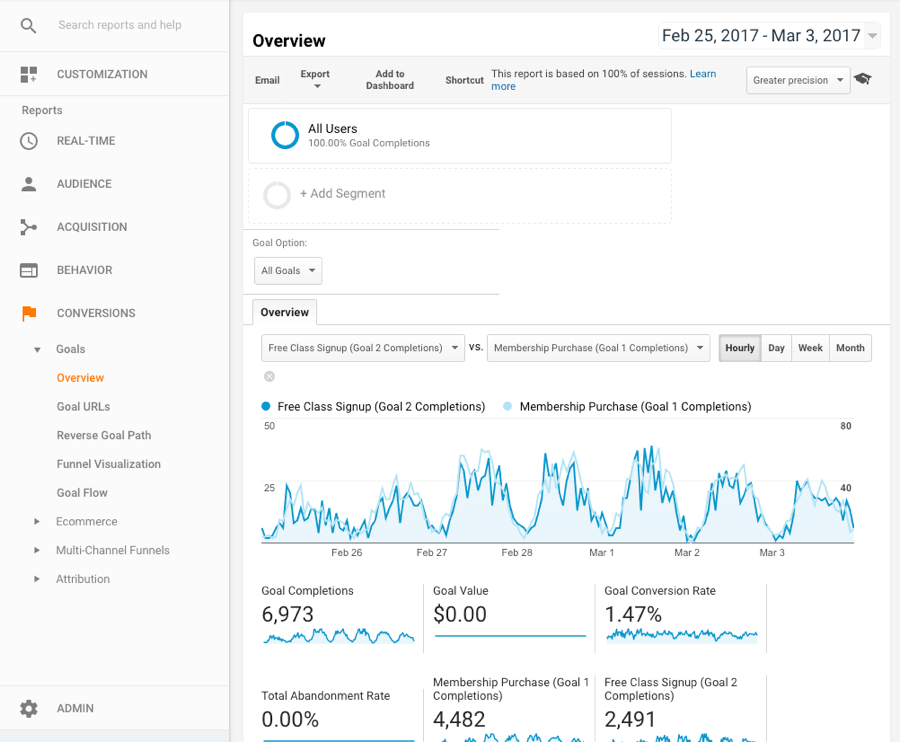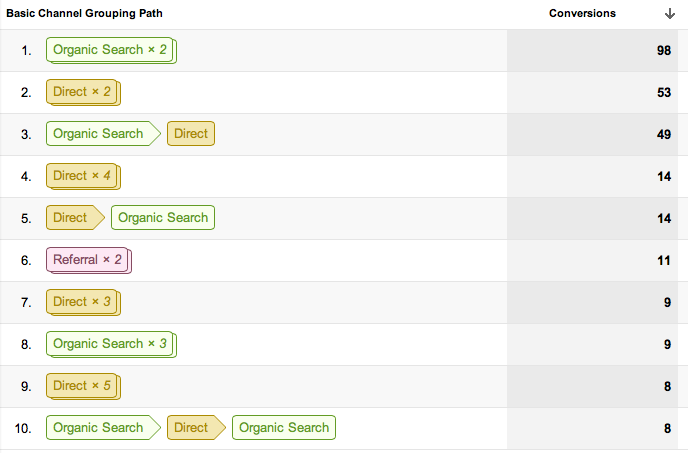What Data Is Google Analytics Goals Unable to Track: Find Out the Limitations
What Data Is Google Analytics Goals Unable to Track: Find Out the Limitations
Blog Article
Demystifying Google Analytics Limitations: Reveal What Information Goals Can not Track
In the realm of electronic analytics, Google Analytics stands as an effective tool that offers important understandings right into web site performance and user habits. Amidst its capacities, there exist limitations that usually go undetected. Comprehending what Google Analytics can not track is critical for a thorough grasp of data interpretation and decision-making procedures. From the details of customer interaction with vibrant content to the intricacies of cross-device user trips, these restrictions dropped light on areas that might continue to be covered from conventional analytics viewpoints. By untangling these restraints, a more clear photo emerges, allowing for even more enlightened strategies and improved insights into user engagement and conversions.

Customer Communication With Dynamic Material
Individual communication with vibrant web content plays a crucial role in comprehending customer actions on web sites and maximizing the general customer experience. Dynamic content describes aspects on a web page that can transform without the requirement for a full web page reload. This includes interactive components such as pop-ups, sliders, types, and videos that react to user actions in real-time. By tracking customer communications with vibrant web content, internet site proprietors can gain useful insights right into customer engagement, choices, and behaviors.
Google Analytics supplies numerous tools to track user interactions with vibrant web content, such as occasion tracking and virtual pageviews. Occasion monitoring allows you to check certain user actions, like clicking a switch or viewing a video, providing information on exactly how users connect with vibrant aspects.
Cross-Device Customer Journeys
How can modern analytics tools track the facility paths individuals take across numerous tools in their on-line trips? Cross-device user trips present a significant challenge for tracking and evaluating user behavior precisely. As users interact with apps or sites making use of various tools such as tablets, smart devices, and desktops, it ends up being essential to comprehend just how they relocate between these platforms to enhance user experience efficiently.
Google Analytics deals with restrictions in tracking cross-device customer journeys due to personal privacy concerns and technological restraints - what data is google analytics goals unable to track. While it can give insights right into individual tools' communications, tracking a smooth user journey across multiple devices remains an obstacle. This restriction can result in insufficient information and fragmented user insights, making it difficult for organizations to develop a unified sight of the client journey
To resolve this issue, organizations can use advanced analytics devices that provide cross-device tracking capabilities, permitting them to obtain an extra alternative understanding of individual behavior. By leveraging these tools, companies can bridge the gap in tracking cross-device user journeys and enhance their digital approaches for a smooth customer experience.
Offline Conversions and Acknowledgment
As companies browse the challenges of tracking cross-device customer trips, another critical facet to consider is the world of offline conversions and attribution in the realm of information analytics. While Google Analytics gives valuable insights right into on the internet individual habits, it drops short when it involves tracking conversions that happen offline. This limitation presents a significant challenge for organizations that have both online and offline sales networks.
Offline conversions, such as purchases made in physical shops or via phone call centers, are check out here vital to understanding the total consumer trip. Without the ability to associate these offline conversions to certain on-line communications, companies might struggle to precisely determine the effect of their electronic marketing initiatives.
To resolve this void, companies can discover different solutions such as integrating CRM systems with on-line analytics tools or using one-of-a-kind promotion codes that can be mapped back to on-line campaigns. By bridging the void in between online and offline data, organizations can obtain a much more detailed understanding of their customers' actions and improve their total advertising and marketing methods.
Individual User Recognition
In the realm of data analytics, the capacity to accurately identify individual customers throughout numerous on-line touchpoints is a crucial obstacle for services looking for to individualize and optimize their advertising methods. While Google Analytics provides useful understandings right into individual habits and communications, it drops brief in allowing the identification of particular individuals due to privacy concerns and technological restrictions. Google Analytics uses unique identifiers such as cookies to track user sessions and habits, yet these do not equate to recognizing individual users in an individual feeling.

Information From Secure Pages
In spite of the raising occurrence of safe and secure web pages on web sites, getting data from these encrypted sources offers a distinct challenge for electronic analytics systems like Google Analytics. Protect pages, suggested by HTTPS in the URL, secure information traded navigate to this site between the user's web browser and the web site's web server to make certain privacy and safety. While this file encryption is crucial for shielding delicate info, it additionally presents constraints for tracking customer habits and gathering analytics data.
Google Analytics deals with obstacles in accumulating in-depth info from safe web pages as a result of the file encryption procedures in position. Consequently, specific data factors such as reference sources, keyword searches, and also some customer interactions might not be totally caught when customers access a web site via a safe and secure connection. This limitation can affect the accuracy and efficiency of the data evaluation, resulting in gaps in comprehending user behavior and choices on secure web pages.
To navigate this challenge, digital analysts might need to discover alternate tracking techniques or utilize other devices particularly made to gather understandings from protected pages. By adjusting approaches to fit these restrictions, businesses can still acquire useful analytics despite the constraints provided by encrypted connections.
Verdict
Finally, Google Analytics has restrictions in tracking individual interaction with vibrant material, cross-device customer trips, offline conversions, private customer recognition, and information from protected web pages. These limitations prevent a detailed understanding of individual actions and may bring about gaps in information evaluation. Regardless of its useful understandings, Google Analytics might not supply a total picture of user involvement throughout numerous touchpoints. It is crucial for services to be familiar with these restrictions and take into consideration auxiliary devices for an extra all natural view of their information.
Customer interaction with vibrant material plays a vital duty in understanding individual behavior on sites and maximizing the total customer experience. By tracking user interactions with vibrant web content, site proprietors can obtain useful insights right into user interaction, choices, and behaviors.
Google Analytics utilizes unique identifiers such as cookies to track user sessions and actions, yet these do not correspond to determining private customers in an individual feeling.
As a result, specific data points such as referral sources, keyword searches, and even some user interactions might not be totally caught when customers access a site via a safe connection.In verdict, Google Analytics has constraints in tracking customer interaction check that with dynamic material, cross-device individual trips, offline conversions, private user identification, and data from safe and secure web pages.
Report this page